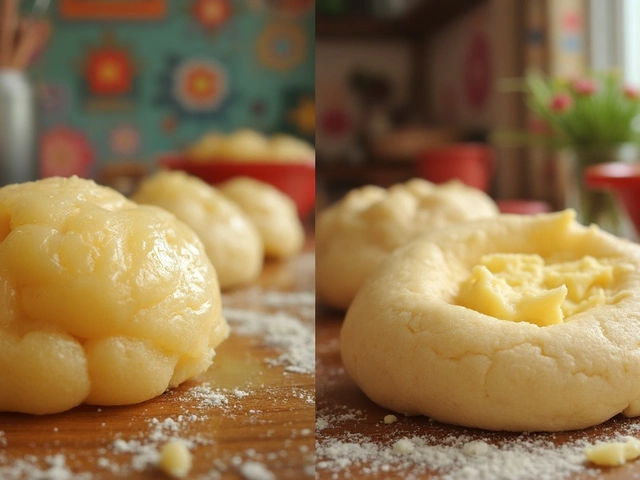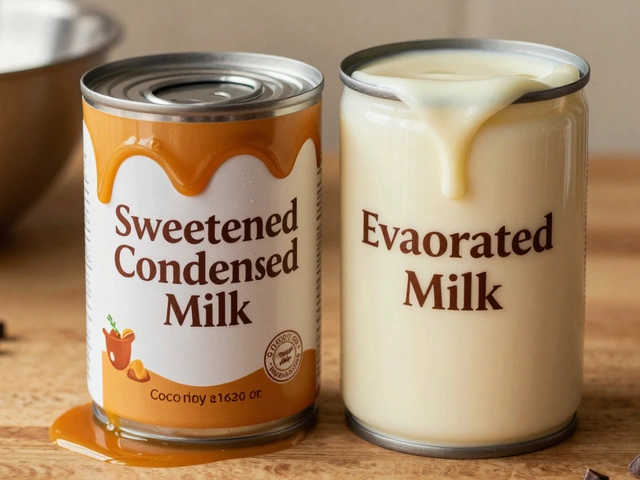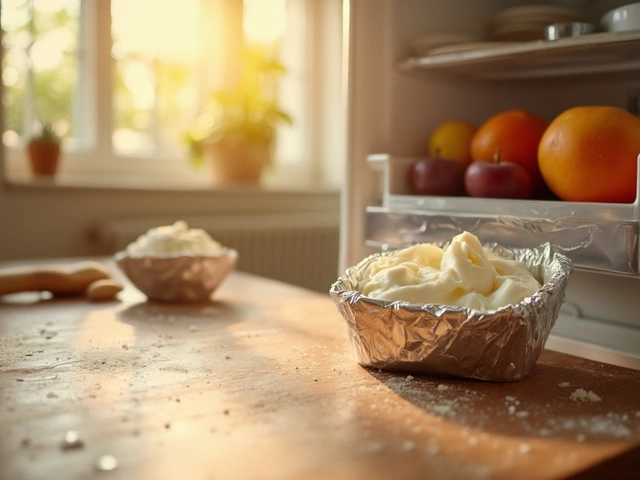
Brownie Texture Calculator
Oven Temperature Adjuster
Home ovens are often 15-25°F off - use this to get the right temperature for fudgy brownies
Your Results
Why this works
Your oven runs hotter than set. Baking longer at high temperatures dries out brownies by evaporating moisture too quickly. Adjusting time prevents overbaking.
Pro Tip
From ArticleUse a double boiler when melting chocolate to prevent seizing. This ensures smooth batter for even texture.
There’s nothing worse than pulling a batch of brownies out of the oven, waiting for them to cool, and then biting into one-only to find it’s as hard as a cookie. You followed the recipe. You measured the ingredients. So why did your brownies turn out dry and tough?
The Science Behind Brownie Texture
Brownies are supposed to be fudgy, dense, and moist-not crunchy or crumbly. Their texture comes from a delicate balance of fat, sugar, flour, and eggs. When you bake them, the heat causes proteins in the eggs to coagulate, starches in the flour to gelatinize, and moisture to evaporate. If that evaporation goes too far, the brownie loses its softness and becomes hard.Most people think brownies are done when a toothpick comes out clean. But that’s the biggest mistake you can make. A clean toothpick means the center is fully set-and that’s a sign of overbaking. Fudgy brownies need a few moist crumbs clinging to the toothpick. If it’s completely clean, you’ve baked them past their sweet spot.
Overbaking Is the #1 Culprit
Your oven might be running hotter than the dial says. Most home ovens are off by 15-25°F. If your recipe says 350°F but your oven is actually at 375°F, your brownies will bake faster and lose moisture quicker. That’s why they turn hard even if you followed the time to the minute.Try this: buy an oven thermometer. Place it in the center of the oven while preheating. If it’s reading higher than your setting, adjust the temperature down. For brownies, aim for the lower end of the range-325°F instead of 350°F. You’ll get a more even bake without the edges burning while the center is still raw.
Too Much Flour, Not Enough Fat
Flour gives structure, but too much turns brownies into cake. A classic brownie recipe uses about 1/2 to 3/4 cup of flour for a 9x13-inch pan. If you’re scooping flour with a measuring cup and packing it down, you could be adding 20-30% more than you think. That extra flour soaks up moisture and makes the batter dense and dry.Instead, spoon the flour into the cup and level it off with a knife. Or better yet-weigh it. One cup of all-purpose flour should weigh 120 grams. If your recipe doesn’t list weights, switch to one that does. Fat matters too. Butter and chocolate are your moisture heroes. If you skimp on either, or use low-fat chocolate, you’re setting yourself up for hardness.

Not Enough Sugar or the Wrong Kind
Sugar doesn’t just sweeten brownies-it keeps them soft. Granulated sugar pulls moisture from the air and helps retain it during baking. Brown sugar, which has molasses, does the same thing but even better. Many recipes call for a mix of both. If you only use white sugar, or swap it out for a sugar substitute, you’re removing a key moisture-locking agent.Also, don’t reduce sugar to make brownies "healthier." You might think you’re cutting calories, but you’re killing texture. A brownie with 20% less sugar will taste flat and turn hard faster. Stick to the recipe. The sugar is doing more than making it sweet-it’s helping it stay gooey.
Storage Mistakes That Make Brownies Dry Out
Even perfectly baked brownies can turn hard if you store them wrong. Leaving them uncovered on the counter? That’s a fast track to dryness. Brownies lose moisture to the air. Within 24 hours, they can go from fudgy to crumbly.Here’s what works: let them cool completely, then cut them. Wrap each piece tightly in plastic wrap, or store them in an airtight container with a slice of bread. Yes, bread. The moisture from the bread transfers slowly to the brownies and keeps them soft. Replace the bread slice every day if you’re keeping them longer than three days.
Refrigeration? Avoid it. Cold air pulls moisture out of baked goods. If you must refrigerate them (say, for a picnic), wrap them in two layers of plastic and then foil. Bring them to room temperature before eating-cold brownies taste like cardboard.

What About the Chocolate?
The type of chocolate you use changes everything. Bittersweet or semisweet chocolate with 60-70% cocoa solids gives you the best texture. Dark chocolate above 75% has less sugar and more cocoa butter, which can make brownies dry and bitter. Milk chocolate has more sugar and milk solids, which can make them too soft or greasy.And don’t melt chocolate in the microwave on high. It seizes. Use a double boiler or low power in the microwave, stirring every 20 seconds. If the chocolate seizes, your brownie batter will be grainy and won’t blend properly. That leads to uneven texture-and hard spots.
How to Rescue Hard Brownies
You baked them too long. They’re dry. Now what? Don’t toss them. Here’s a trick that works: place the brownies in a sealed container with a damp paper towel. Let them sit overnight. The moisture from the towel will slowly rehydrate them. It won’t make them fudgy again, but it’ll soften them enough to eat.Another option: turn them into bread pudding. Cut them into cubes, layer them in a dish with custard (eggs, milk, vanilla), and bake at 350°F for 30 minutes. The custard soaks in and turns hard brownies into a warm, comforting dessert.
Quick Fixes for Next Time
- Use an oven thermometer-never trust the dial.
- Bake at 325°F, not 350°F, for more even results.
- Take brownies out when the center still jiggles slightly.
- Weigh your flour-don’t scoop it.
- Use chocolate with 60-70% cocoa solids.
- Store in an airtight container with a slice of bread.
- Never refrigerate unless absolutely necessary.
Perfect brownies aren’t about perfection. They’re about timing, ingredients, and patience. The best ones are slightly underbaked. They’re warm, gooey, and melt in your mouth-not hard enough to crack a tooth. Next time you bake, trust your eyes more than the timer. Let the batter tell you when it’s ready-not the clock.





